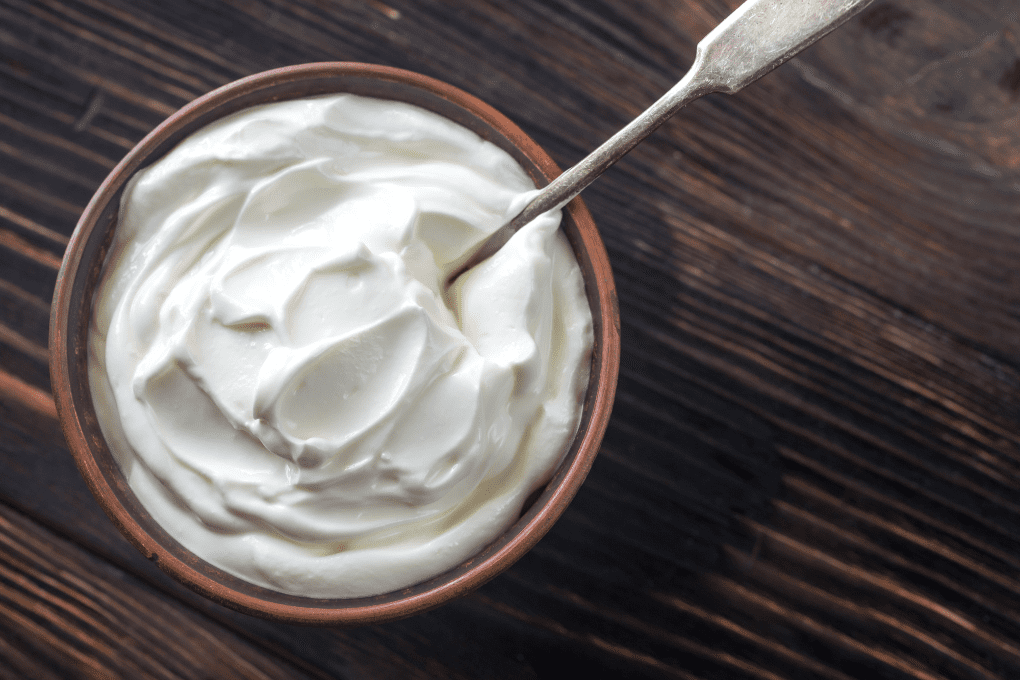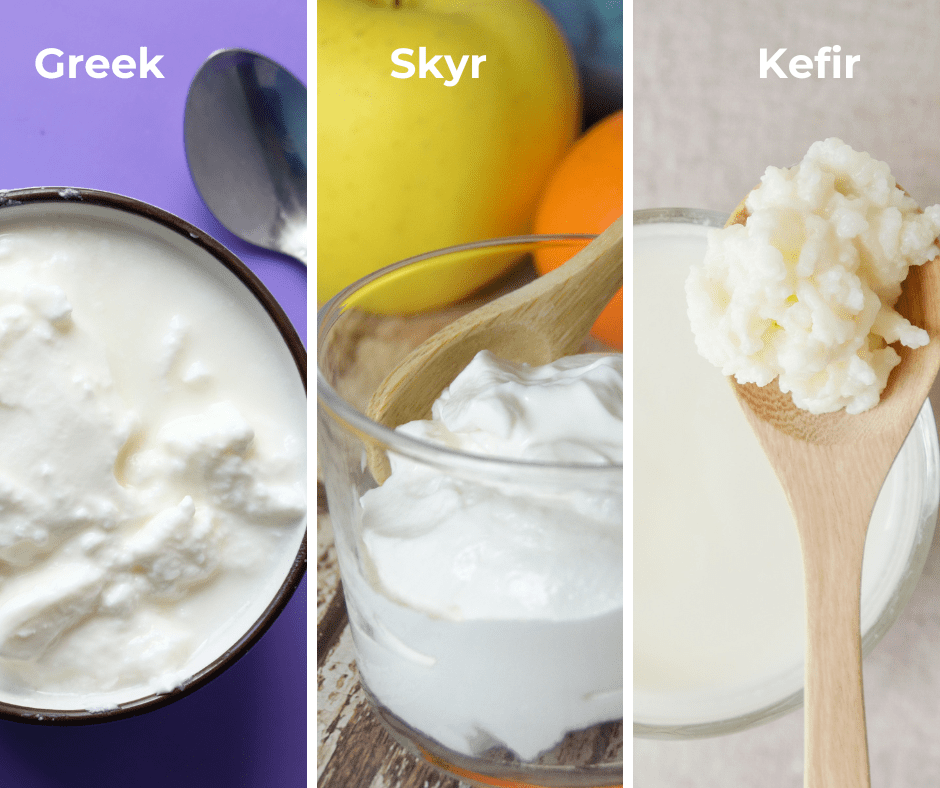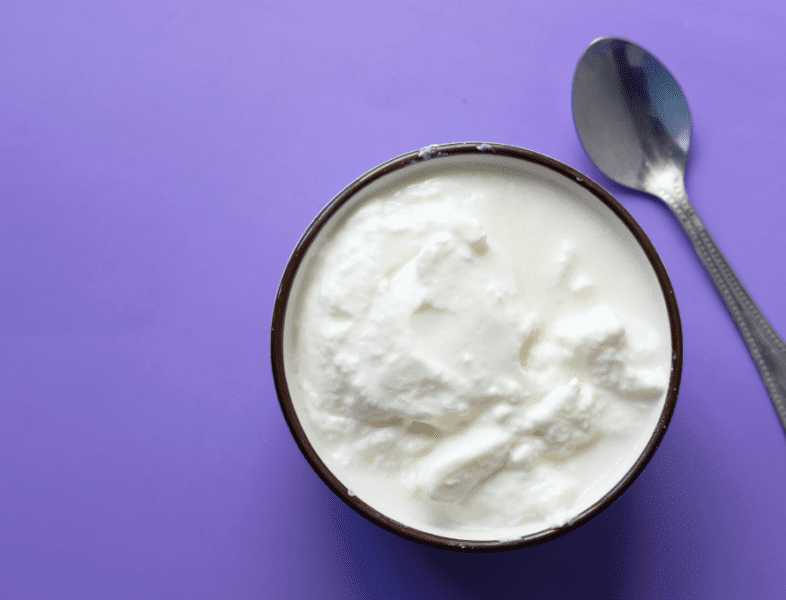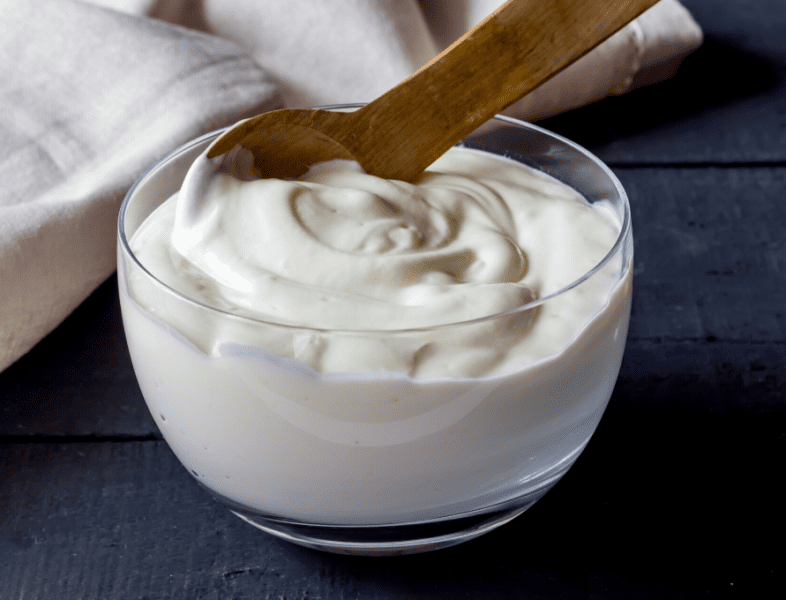Today, there are many types of yogurt that vary in texture, nutrient content, and flavor to fit your lifestyle. Yogurt is made by fermenting milk with the cultures Lactobacillus bulgaricus and Streptococcus thermophilus. The milk thickens as it ferments and takes on a tangy, creamy quality, resulting in the yogurt. The longer the yogurt is strained, the thicker it will be like Greek- or Icelandic-style yogurts. Other types of bacteria may be added, as well as sweeteners, flavorings and other ingredients.
Popular Types of Yogurt

Greek yogurt is made in the same way as regular yogurt but is strained after the fermentation period to remove the water (whey). This results in a thicker, creamier yogurt with a more concentrated protein content and lower lactose content. Greek yogurt is delicious on its own as a meal or a snack, but can also make a great substitute for milk, sour cream and heavy cream in recipes.
Skyr or Icelandic-style yogurt may be found in the yogurt section, but technically it’s a cheese. Known in Iceland as a spoonable cheese, skyr is made by heating skim or low-fat milk with a small amount of skyr from a previous batch, which provides the bacterial cultures. Once thickened, the whey is slowly drained leaving a thick, sour product like a soft cheese.
Kefir is a drinkable fermented dairy product made when kefir “grains” (a yeast and lactic acid bacteria culture which looks like cauliflower) are added to whole, reduced, or fat-free milk. The mixture is left to ferment at room or refrigerator temperature. Once thickened, the grains are separated from the liquid and can be used to make the next batch of Kefir. Kefir is easy to make at home or can be found in various flavors in the dairy aisle.
Some yogurts contain flavor and added sugar to help reduce its natural tartness. From common flavors like vanilla and blueberry, to more unique or seasonal flavors like coffee and pumpkin spice, it’s easy to find your favorite flavor in the dairy aisle. The 2020-2025 Dietary Guidelines for Americans notes that a small amount of added sugar can improve the palatability of nutrient-dense foods, like yogurt, within a healthy eating pattern. If you’re trying to reduce the amount of added sugar in your diet, try mixing plain yogurt with crushed fruit, like a mashed banana, to add natural sweetness, fiber and extra nutrition.
Health Benefits of Yogurt
Yogurt is a nutrient-rich food that contributes essential nutrients such as protein, calcium, phosphorus, zinc, vitamin B12, pantothenic acid (B5) and riboflavin (B2) to recommended healthy dietary patterns. Eating yogurt has been linked with a reduced risk for chronic diseases, long-term weight maintenance, improved bone health and reduced markers of chronic inflammation. Plain whole milk yogurt is also considered a complementary food for babies starting at six months of age thanks to its packed nutrient profile.
While all yogurt contributes key nutrients to the diet, different types of yogurt can vary in calories, protein and fat depending on how it was produced. The calories in different types of yogurt will differ depending on the fat content and added sugars and ingredients. On average, one 3/4 cup serving of plain low-fat (1.5% milkfat) yogurt contains 110 calories and 8 grams of high-quality protein.
Yogurt, like milk and cheese, is a good source of high-quality protein. As part of a diet higher in protein, yogurt may help promote satiety when eaten as a snack. Thicker, strained yogurt varieties will contain even high amounts of high-quality protein per serving. Greek yogurt on average contains twice the protein of regular yogurt and Skyr can contain more than 20 grams of protein in 1 cup.
Yogurt contains varying amounts of fat, from fat-free to triple cream varieties. Be sure to read the nutrition label to choose the fat-level that fits your lifestyle and taste preferences.






